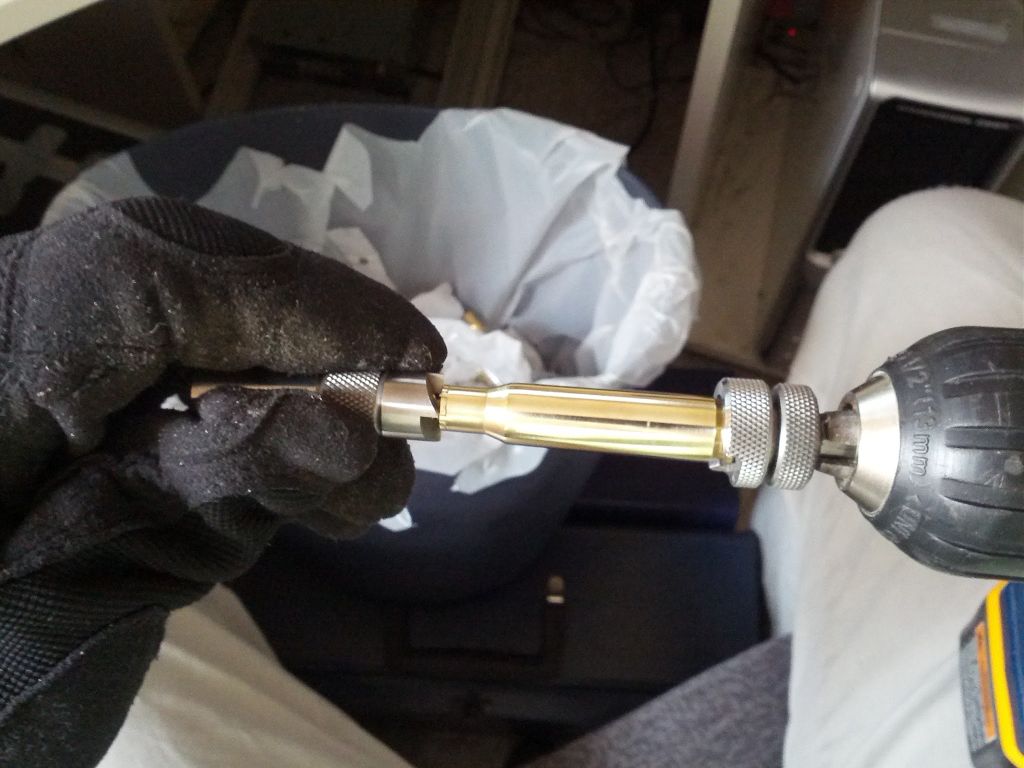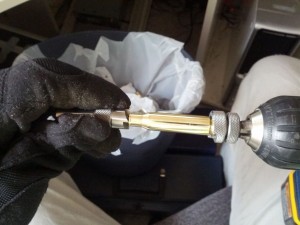The Lee precision case trimmer is the most inexpensive case trimming solution commonly available today. It consists of a standard cutter and lock stud along with a case specific pilot and shell holder. The cutter and lock stud come with the Lee Anniversary set, while the pilot and shell holders come cartridge specific for a few bucks each. They’re set for a standard cutting length, and trim cases pretty inexpensively for new reloaders. In addition to these tools, you may want a chamfer tool, primer pocket cleaner, and a power drill. Some steel wool can be used to really clean up cases that have got moisture on them and discolored, but is only to make them look good. I use a leather glove on my left hand to keep my fingers from getting raw closing and opening the lock stud. In this brief howto, I’m assuming you’ve already full length or neck sized your brass. First, chuck up your lock stud and cartridge holder in your drill.
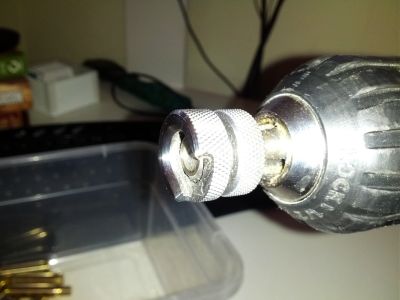
For each piece of brass, I run through the following steps to prep them using the Lee system
1. Clean the primer pocket of any loose ash. This step will make it easier to seat your primer. I’ve got my one hand off the primer pocket cleaner so I could take this picture but normally I’d have my right hand on the primer pocket cleaner scraping any ash out of the primer pocket.
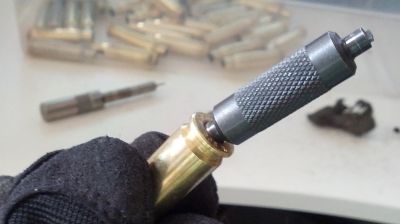
2. Put your brass in the lock stud, lock it down tight, and use the steel wool to polish the brass (optional, but it makes them look good).
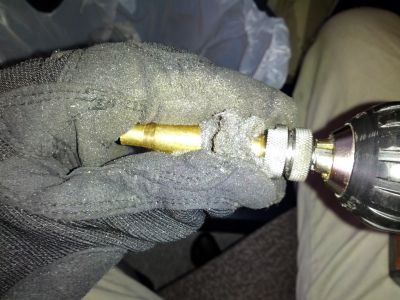
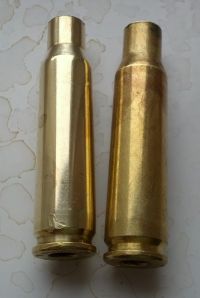
3. Pop your pilot/cutter assembly into the brass and trim the brass. Make sure that your drill is going forwards. Cut at a medium speed, and you should distinctly feel when it stops cutting. Put the whole deal into or above a trash can to catch the brass shavings coming off. I wouldn’t recommend doing this on a carpet, as you’ll get pokey brass shavings all over the place.
4. Chamfer the inside of the case mouth. This will let you seat your bullet without scraping the crap out of the outside of it. You only need a couple of turns, so don’t overdo it!
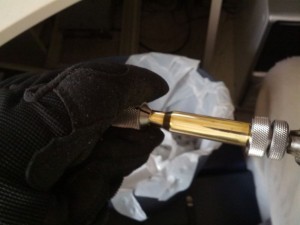
5. Optional: Chamfer outside of case. If you’ve trimmed your case a lot, you might find some brass rolled over on the outside on you. Outside chamfering can be used to lightly trim away the excess brass.
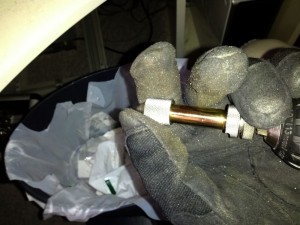
Once complete, you should have a nice, clean case mouth. It should not be too thin; you don’t want a razor thin case mouth as that would make it easy to crack and will reduce lifespan of the case.
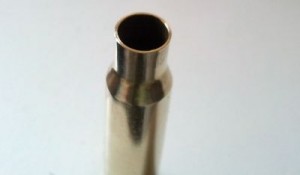
That’s it! I can do a full case in about 45 seconds, including polish and primer pocket cleaning, but remember that it’s not only about speed. When reloading, you want to make sure you do all the steps consistently and don’t miss any. Speed is nice because you can finish faster, but missing a step when reloading can mean blowing up your gun and injuring yourself or others. Stay safe and read your instructions!
